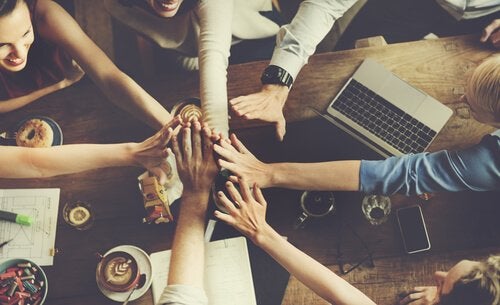We all have prejudices. Prejudice are positive or negative attitudes towards groups or their members that we use to evaluate and label people we do not know, for example, if we meet a gypsy and we think that gypsies play the guitar well, our interaction with him would be determined Because of this prior belief that he would be a good musician. Prejudice is used to maintain hierarchies of status between groups, but fortunately there are different ways to reduce prejudice.
Prejudice is thought to have three components: a cognitive component, stereotypes, which represent the mental images we have of members of a particular group; another component is the emotional, emotions and feelings that awaken; the last component is behavioral, represented by discrimination, by negative attitudes towards the group against which we have prejudices.
- Since these are attitudes towards groups or their members.
- Social psychology has developed different ways to reduce prejudice.
- Based on theories of categorization and social identity.
People tend to categorize, to divide people into categories, this categorization makes us more favourable to those we include in our own category, thus creating prejudices against the members of others, therefore increasing the flexibility of category boundaries will reduce prejudices. , there are at least three possibilities:
? I am who I am and you are like you, let us build a world where I can exist while still being me, where you can exist while still being you, and where neither I nor you force the other to be like me. Or like you?. – Deputy Commander Marcos.
This last strategy, recategorization, has been the most studied, since categorization leads to the formation of identities, if I categorize myself as a woman, I will form the identity of women, so to encourage recategorization it would be necessary to create new and more inclusive Identities That encompass both my identity and that of others.
For example, if my identity is that of a woman and yours is that of a man, I will favor more my group, women, and I will have prejudices against the members of your group, men, if on the contrary both identify with the identity of feminists, then I will favor both men and women.
Having a common identity increases helping and cooperative behavior, so the more people are part of the identity, the greater the benefits for the group, also, going back to the previous example, the initial identities would not be lost. They would continue to be women and feminists or men and feminists, in this way we would have a dual identity and, even if there was another group with another identity, they would be members of our group at the same time. Social identities are not activated all at once, only the most important one will be activated at that moment.
The contact hypothesis is closely linked to categorization strategies to reduce prejudice. This theory states that prejudice can be reduced when contacts between members of various social groups increase or when group members are known to have close relationships with members of others.
However, the contact hypothesis only appears to work under specific conditions that promote contact between members of different social groups. There are four conditions:
In short, there are many ways to reduce prejudice. Apparently, creating a category as “human”, from which a human identity is generated, would be ideal. This would be the ideal way to reduce prejudice.
However, the difficulty of getting people identified as human and always the most important identity complicates the viability of this option, perhaps a common enemy, from another planet, would make us identify as human or earthly, so final prejudices are possible, but unlikely.

